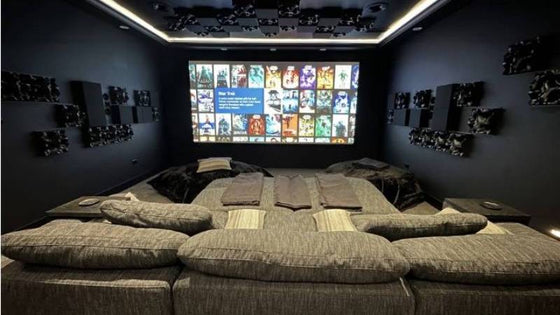Creating a system you love shouldn't be difficult. The Acoustic Frontiers blog is here to help.

"The holy grail of loudspeakers is a sound source that provides a sound field whose three dimensional radiation pattern is constant over a wide frequency range. This type of source provides an acoustic output whose spectral content does not vary with direction. Particularly challenging is a speaker that couples these characteristics with high directivity. Traditionally, these speakers are called constant-directivity or constant bandwidth devices. Various methods have been used in the sound industry to approximate this behavior including horns, omnidirectional sources, and arrays, higher-order sources, etc" Syn-Aud-Con Newsletter, 2010. If you have been reading our series of articles on speaker directivity you'll know that none of the approaches we have looked at so far really achieve the 'holy grail'. The CBT approach we examine in this article gets the closest because its beam pattern and directivity is essentially independent of frequency. The CBT approach originated in research into underwater transducers, which was then applied to speakers by Don Keele in a series of AES articles. To my knowledge there are only two commercially available products utilizing the approach - the Audio Artistry speaker kit available via Parts Express and the JBL CBTs such as the 70-J.

Parts Express / Audio Artistry CBT
A line source speaker tends to take the form of a vertically stacked array of small drivers. CBTs can look a lot like line sources in their physical appearance, but from a directivity perspective they are quite different, as the following graphic, from Floyd Toole's Sound Reproduction book (excerpt here) shows.

CBT vs. point and line source directivity
The diagram shows a point source (a), line sources (b, c) and various types of CBT (c) through (f). The term 'shaded' refers to a design that tapers off the SPL output of drivers towards one end of the line. You can see that designs (e) and (f) are pretty much the same but with one implementation using delay and the other distance to achieve the same effect (delay and distance being interchangeable). Note that JBL have implemented delay in their designs using passive all pass networks (see this tech note for further details). The amazing directivity control and vertical dispersion of CBTs can be clearly seen in these diagrams. There is a complete lack of lobing in the vertical plane and flat directivity through the whole audio bandwidth! Don Keele has published an extensive collection of measurements in a very interesting comparison of the B&W Matrix 801 and his CBT implementation.
Acoustic treatment above the rooms transition frequency is typically used to control off axis irregularities or directivity issues in a speakers response. A speaker like a CBT allows much freedom in acoustic treatment design, because there are no issues that need correcting! Every room will still need acoustic treatment to control room mode issues. And every room will still need treatment to balance the level of energy in the direct, early and reflected soundfields. The CBT, like the line source, shares the benefit of reduced loss in SPL over distance (3dB per doubling of distance vs. 6dB for a point source). Such a characteristic can be very beneficial in outdoor applications where the sound often has to travel further than inside a room and there is little support from room reflections. The JBL CBTs are a very good choice for such an application because they are weatherproof. Another good application is surround speaker applications in home theaters where CBTs can provide much more consistent SPL across a row of seats than a point source.

JBL CBT Simulation
A major benefit of the CBT design is that the high vertical directivity keeps energy off the ceiling and floor. We did a project recently where we replaced the sound system in a large room (50') with relatively low ceilings (8'). The CBT was the perfect speaker for this situation, because it kept energy off the floor and ceiling and also kept SPL more consistent from front to back in the room. The graphic above shows our simulation for this implementation.
Learn how early home theater design, layout, and acoustic treatment improve performance in new home construction.
This media room was intentionally designed to feel like part of the home—not a separate, tech-heavy space. Through careful acoustic planning, equipment integration, and final calibration, we achieved a room that is both beautiful to live in and immersive to experience.
"No other subwoofer system I’ve owned even comes close to what this room delivers. Reaching out to Acoustic Frontiers was one of the best decisions I’ve made—I highly recommend working with them if you want to get the most out of your theater."

Nyal Mellor, Founder, Acoustic Frontiers



Nyal Mellor
Author